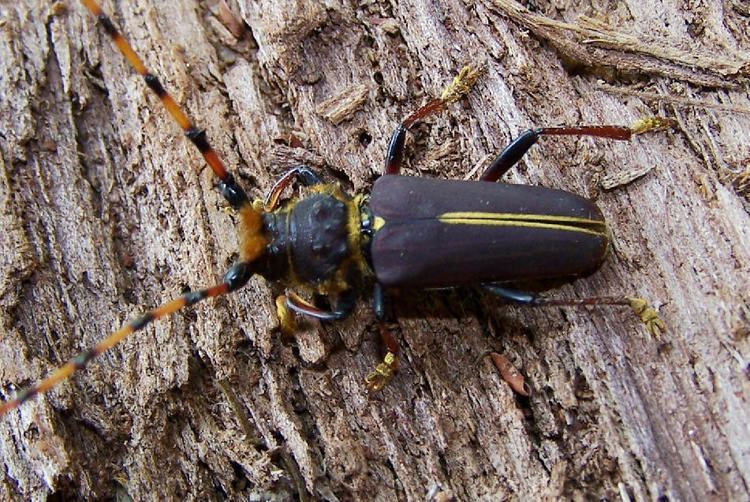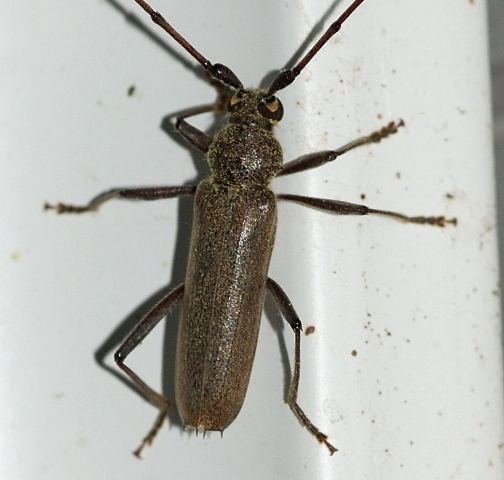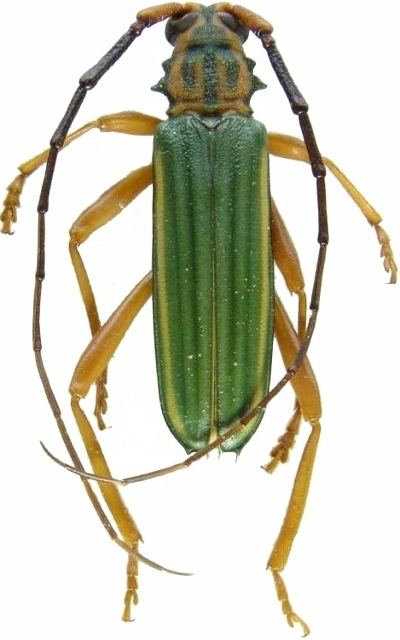Superfamily Chrysomeloidea Rank Subfamily | Suborder Polyphaga Scientific name Cerambycinae Higher classification Longhorn beetle Order Beetle | |
 | ||
Lower classifications Xylotrechus, Neoclytus, Musk beetle, Cerambyx cerdo, Rosalia longicorn | ||
Cerambycinae is a subfamily of the longhorn beetle family (Cerambycidae). The subfamily includes over 715 genera, which, in total, consist of some 3,900 species. The subfamily is most widely distributed in the Americas, with 430 species in 130 genera in its neotropical regions. Within the family, the only subfamily of comparable diversity is the Lamiinae.
Contents

Distribution
Cerambycines are found worldwide, especially widely distributed in the Americas, especially the neotropical regions.
Identification

The major distinguishing factors are the bluntness of the last segment of the maxillary palp, its slanting or near vertical face, the rounded pronotum, and the elytra are often the widest in the middle.
Tribes
Cerambycinae contains 67 tribes as well as some genera and species that currently have uncertain placement:




